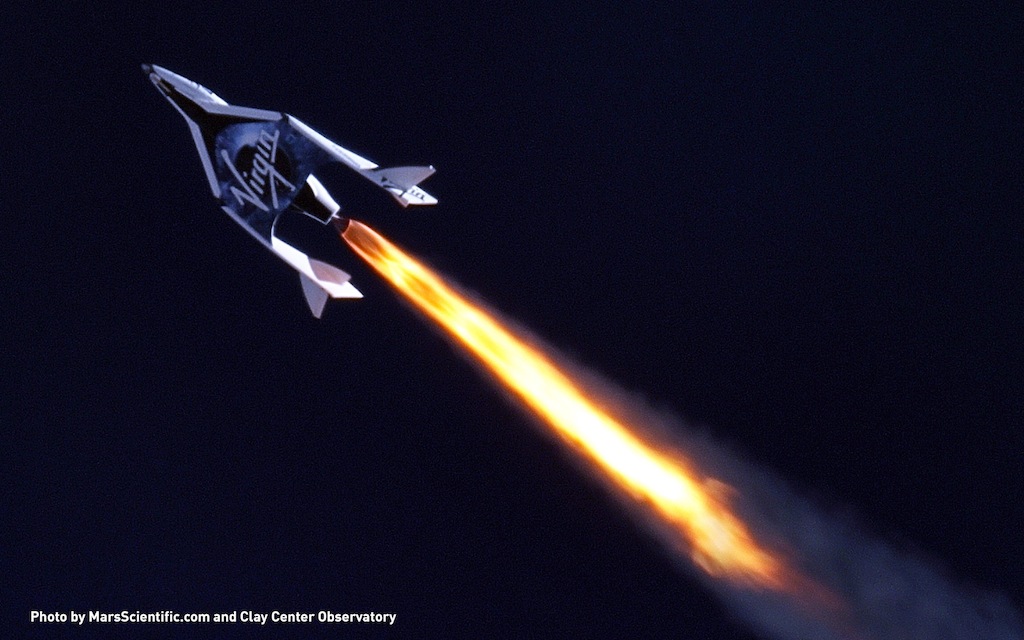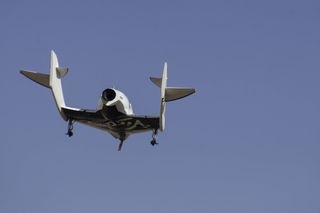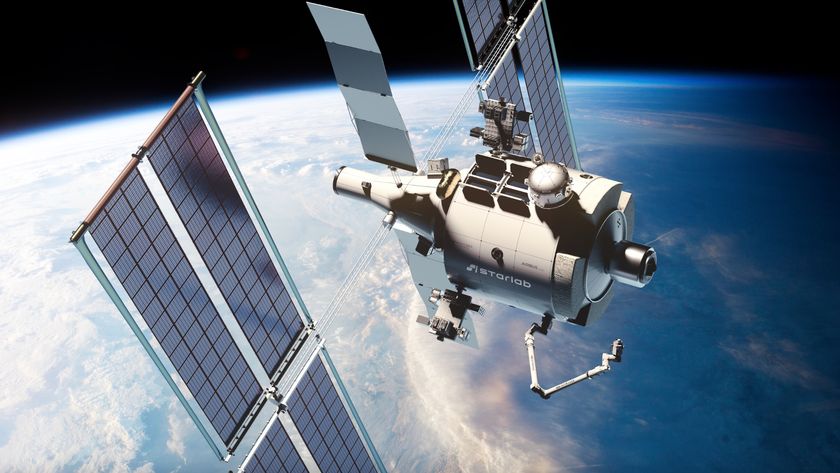Watching SpaceShipTwo Soar: A Reporter's View of Virgin Galactic's Test Flight

MOJAVE, Calif. — At 7:02 a.m. Pacific Time, Virgin Galactic's WhiteKnightTwo carrier accelerated down Runway 30 at the Mojave Air and Space Port here and lifted off under a clear blue sky.
Turning to the north, the giant twin-boom aircraft and its cargo — the suborbital SpaceShipTwo spacecraft — flew directly over the heads of a handful of photographers who had gathered between the airport's exterior fence and a railroad line. SpaceShipTwo's belly, which is decorated with Virgin Galactic's giant eye logo, gazed down upon the small crowd as it passed overhead.
We've seen these two vehicles perform this same takeoff many times before, but this one was distinctively different. Instead of gliding to a dead stick landing on the desert floor after being released from the mothership, SpaceShipTwo's pilots Mark Stucky and Mike Alsbury lit the spacecraft's hybrid rocket engine for the first time and soared skyward. The moment was a long time in coming. [See amazing photos of SpaceShipTwo's 1st Powered Flight Test]

Eight and a half years have passed since Branson announced the SpaceShipTwo project. On Oct. 4, 2004 — the day that SpaceShipTwo's predecessor (called SpaceShipOne) won the $10 million Ansari X Prize — Branson stood at this same dusty desert spaceport and promised commercial flights within three or four years. It ended up taking a lot longer than he, or anyone else, expected.
But by this morning, SpaceShipTwo and WhiteKnightTwo were slowly climbing to launch altitude. I headed over to Denny's with myfriend, photographer Ken Brown, to get some breakfast. On previous flights, it had usually taken about an hour and 15 minutes for WhiteKnightTwo to get to 50,000 feet and drop SpaceShipTwo. We figured we had some time to eat and transfer our photos to our laptops and write some Tweets.
But this time, we had no sooner ordered and gotten settled when I got a text from a friend at the airport. "Fifteen minutes," it said. And then a minute later later, a second Tweet came in: 9 minutes! We got our breakfast to go, paid the bill, and headed outside.
Transmissions came in over the radio. Two minutes to drop.
Get the Space.com Newsletter
Breaking space news, the latest updates on rocket launches, skywatching events and more!
Then drop.
Looking up into the sunny sky, we missed the initial release and 16-second rocket firing. Those who saw it said SpaceShipTwo fired its engine shortly after the drop, with orange flames shooting out and a long trail of rocket exhaust extending across the sky. By the time we spotted it the sky, SpaceShipTwo was now far ahead, with its mothership trailing behind it with its dual contrails.
We snapped away, but we didn't have much time for photos. SpaceShipTwo would be coming back down onto Runway 30 where it had taken off. We were on the wrong side of town. And the space plane's glide flight would be measured in minutes.
We jumped in the car and Ken gunned down the highway. Garbled transmissions came over the radio. Had SpaceShipTwo landed already? Were we too late? As we raced down Business Route 58, a handful of motorists were stopped by the side of the road. They were looking up — that was a good sign.
Passing the airport, we turned onto the dirt road that ran along the airport's exterior fence. Up ahead, people had gathered near the end of the runway. Faster, I said. Ken accelerated and we bounced along the rough dirt road in his white 1991 Buick Century sedan. "Just get us there; I'll worry about my kidneys later," I thought.

The spectators — mostly folks dressed in Virgin Galactic gear — were looking up to the southeast. SpaceShipTwo was still airborne. Ken pulled off the road into a small bank of sand, and we scrambled out of the car and grabbed our gear.
And there it was, gliding in for a landing trailed by two chase planes. We snapped away with our cameras as SpaceShipTwo soared directly over our heads for the second time that day. The futuristic space plane settled down to a gentle landing right on the center line of Runway 30.
We breathed a big sigh of relief. The engine test had gone as planned. Nothing had gone wrong. The pilots were back on terra firma. And it was barely past 8 o'clock in the morning.
Follow us @Spacedotcom, Facebook and Google+. Original article on SPACE.com.
Join our Space Forums to keep talking space on the latest missions, night sky and more! And if you have a news tip, correction or comment, let us know at: community@space.com.
Douglas Messier is the managing editor of Parabolicarc.com, a daily online blog founded in 2007 that covers space tourism, space commercialization, human spaceflight and planetary exploration. Douglas earned a journalism degree from Rider University in New Jersey as well as a certificate in interdisciplinary space studies from the International Space University. He also earned a master's degree in science, technology and public policy from George Washington University in Washington, D.C. You can follow Douglas's latest project on Twitter and Parabolicarc.com.












